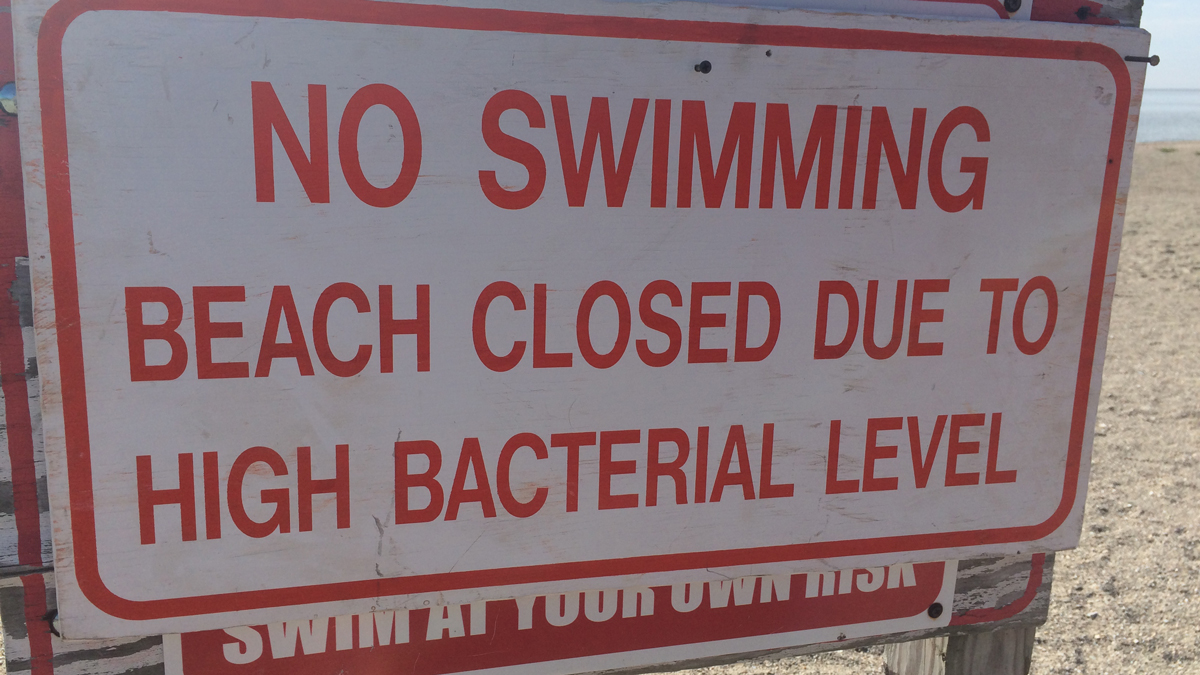Rising Bacterial and Algae Threats: Massachusetts Beaches Battle Contamination Amid August Heat

As the scorching August heat blankets the region, seeking refuge along the picturesque Massachusetts coastline seems like an idyllic way to beat the heat and restore the spirit. However, this year, an unwelcome visitor lurks beneath the glistening waves, threatening to cast a shadow over the remaining days of summer enjoyment. The convergence of elevated temperatures and sporadic downpours has given rise to perilous bacteria and algae proliferation, rendering the waters unsafe and potentially harmful to human health. In a disconcerting turn of events, 42 beaches across the state have been forced to shutter due to the emergence of sinister-sounding concerns like Algae/Cyanobacteria Advisory & Bacterial Exceedance, Bacterial Exceedance, and Algae/Cyanobacteria Advisory.
Behind these ominous monikers lie two primary culprits responsible for the temporary beach closures, shedding light on the dire consequences of unchecked contamination. Firstly, water contamination fueled by bacterial and algal growth has rendered these waters unfit for engaging in once-refreshing activities such as swimming, surfing, and snorkeling. Among these microorganisms, the infamous Escherichia coli (E. coli) stands out, capable of triggering gastrointestinal illnesses upon ingestion. Furthermore, the proliferation of harmful algal blooms (HABs) raises additional alarm, as their toxic emissions can have detrimental effects on human health through direct contact or consumption.
Algal blooms, a phenomenon resulting from the rapid expansion of specific algae species, cast an eerie hue upon the water’s surface. These blooms not only alter the aesthetic appeal of our beloved beaches but can also unleash toxins with the potential to harm both humans and marine life. The discoloration of water, often taking on shades of green, red, or brown, coupled with the emergence of unpleasant odors, serve as visible indicators of the underlying threat.
Unraveling the origins of this predicament, it becomes evident that recent torrential rains have played a pivotal role in exacerbating the situation. Rampant flooding and ensuing contamination, including runoff from agricultural activities, have contributed significantly to the surge in bacteria levels within lakes and ponds. With human health at stake, the decision to close these beaches extends beyond safeguarding visitors; it encompasses the broader mission of preserving fragile marine ecosystems. The disruption caused by algal blooms within the natural food chain can culminate in dire consequences such as fish kills and other adverse impacts on aquatic life.
To navigate the treacherous waters of uncertainty, the Massachusetts Department of Public Health has launched a cutting-edge tool – the Interactive Beachwater Quality Dashboard. This resource is updated twice daily at 9:30 a.m. and 12:30 p.m., providing invaluable real-time insights into the state of beach waters. This interactive platform empowers beachgoers to make informed decisions regarding their aquatic escapades, helping them avoid the disheartening sight of “Beach Closed” signs that may otherwise greet them upon arrival. The dashboard’s comprehensive listings encompass both freshwater and saltwater bodies, while also offering a detailed view of the latest test results.

As the summer sun continues to blaze, prudence dictates that one remains cautious and vigilant, refraining from plunging into waters tainted by the presence of hazardous bacteria and algae. A momentary lapse in judgment could lead to a host of debilitating symptoms, including gastrointestinal distress marked by nausea, vomiting, diarrhea, and abdominal pain. Inhaling the contaminated air may result in respiratory discomfort, manifesting as a sore throat, cough, runny nose, and sneezing. Even the skin is not spared, with dermatological reactions like rashes and itching adding to the litany of woes. For those who dare venture into the infected waters, eye and ear irritation, accompanied by itching and earaches, may serve as a sobering reminder of the risks at hand. Lastly, the emergence of flu-like symptoms, complete with fever and chills, completes the troubling roster of potential consequences.
As Massachusetts battles the dual challenges of escalating bacterial contamination and algal proliferation, the public is urged to exercise caution and remain informed. In a bid to salvage the remaining days of summer and uphold the sanctity of our coastal environments, a collective effort is required. By heeding advisories, staying abreast of water quality updates, and making responsible choices, beachgoers can contribute to the protection of both human health and the delicate ecosystems that make our coastal treasures thrive.
You may also like: Former Boston Celtics Guard Terrence Williams Receives 10-Year Federal Prison Sentence for Leading Elaborate Health Care Fraud Scheme





